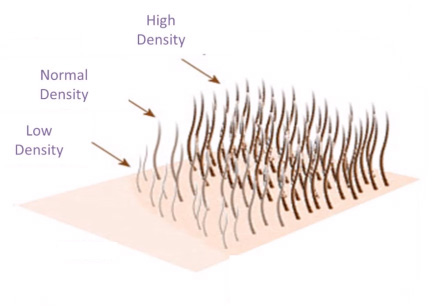Dit artikel is niet beschikbaar in het Nederlands.
How many electrolysis hair removal treatments will I need?
Gepost 17 december 2018

Generally speaking, you are likely to require between 8 and 12 treatments. The average time from start to finish is about 12 months.
It can take anything from 8 months up to 2 years in some cases. The total number of sessions needed to remove hair permanently from a particular area will vary from person to person. But the unwanted hair that is gone will be gone forever.
We realize that this will seem like a very wide time-frame but it is just impossible to be more specific due to a big variation in response to treatment.
The amount of treatments needed is influenced by the following factors
- Your skin — Skin type and skin sensitivity are factors that influence the result.
- Hydration of your skin — Electrical current is conducted more readily in moist tissue than in dry. Moisture is vital for effective electrolysis treatment. In order to generate heat, the moisture molecules must vibrate and cause friction. Therefore, if the amount of moisture is limited, the heat will also be limited.
- Thickness of your hair — Thicker hair is more difficult to remove.
- Quantity of hair — It takes longer to remove hairs that are close together than hairs that are further apart.

- Area where the hair is located — Different areas have different growth cycles. Bikini hair takes longer to clear than facial hair because the growth cycle is longer.
- Hormonal balance — A variety of biologic changes (puberty, illness, emotional upset) can lead to hormonal change that can alter vellus hairs to terminal hairs and activate previously sleeping hair follicles. Estradiol can act as a brake on hair follicle cycling by delaying initiation of growing stage and by prolonging the duration of the resting stage. There are some individuals who are extremely sensitive to changes in hormonal levels.
- Pain threshold — The higher your pain threshold, the longer we can continue the treatment. At 2pass Clinic, you can use local anesthesia to reduce the pain. When using local anesthetics we can carry out longer and more intensive treatments.
- Hair removal that you have already tried in the past —If you have previously had epilation or waxing, your hair follicle may now be deformed. This makes it more difficult to insert the needle. Also it is important to know that hair removed by plucking, waxing or failed electrolysis may not reappear until months later. The regrowth time for a plucked hair will vary with the body area, but the general rule is regrowth occurs 2 to 4 months after plucking.
- Shape of your hair follicle — Curved hair is more difficult to kill as the insertion with the probe is hindered.

- Your cooperation — We advise for a fixed time interval of 10 weeks between treatments.
- Your electrologist — There will always be a certain amount of regrowth, even when electrolysis is performed by a skilled operator. The average killing rate is 50-60 % with 60-75% being roughly the highest level possible. More information on regrowth after electrolysis.
- Unknown factor — Individual unexplained variation in response to treatment. We still don’t fully know all factors that account for the difference in response to treatment. Our knowledge of hair growth has helped us to reduce our regrowth rate. There are still factors concerning hair growth that are not yet known to science. Hopefully, when those factors are discovered we can use this knowledge to even increase our killing rate. At 2 pass Clinic, we are obsessed by our killing rate. If we see we have a bad killing rate the next session we will do a patch test on your face. We will treat different areas with different techniques and settings. The next time we can then determine which program works best for you.
- Safety margin — Remember that in electrolysis hair removal we aim for a fine balance between just enough destructive energy to destroy the hair follicle, yet not enough to produce undesirable side effects. We always err on the side of caution, even though this may result in some regrowth.
Gerelateerde artikels:
- Geen artikels gevonden
We doen ons uiterste best om deze informatie up-to-date te houden. Mocht u iets zien wat niet meer klopt, of heeft u een vraag, vul dan het onderstaande formulier in!
